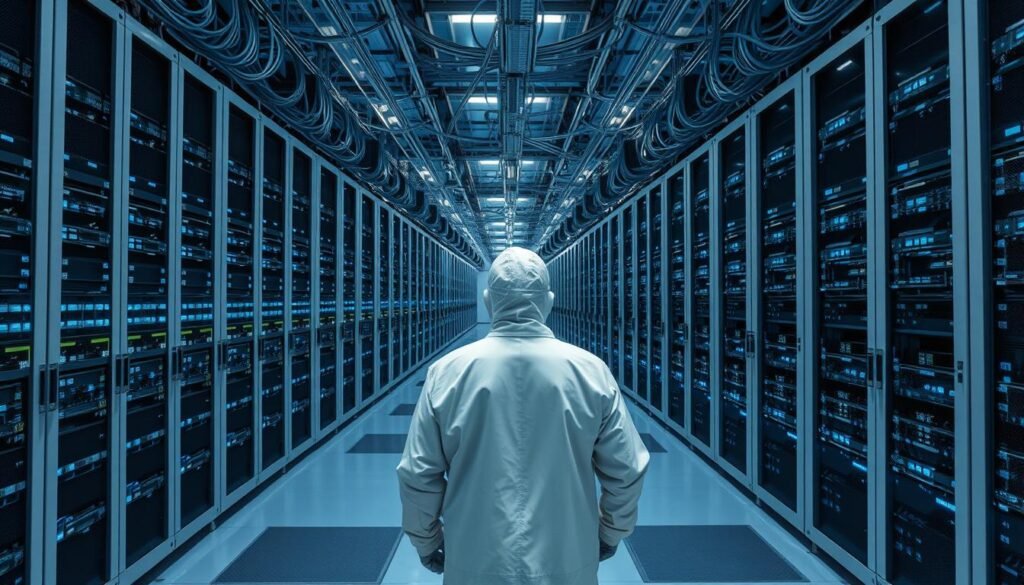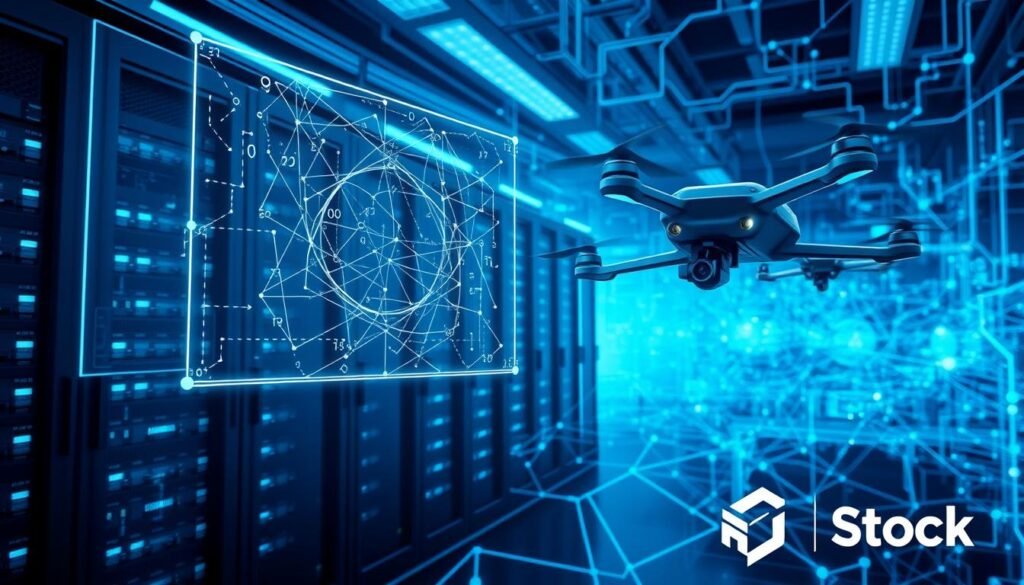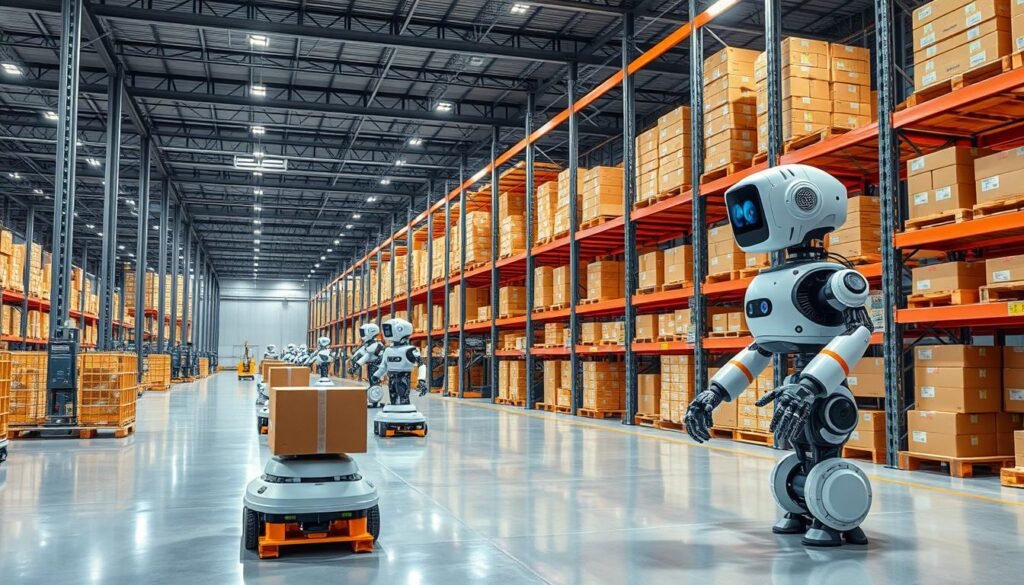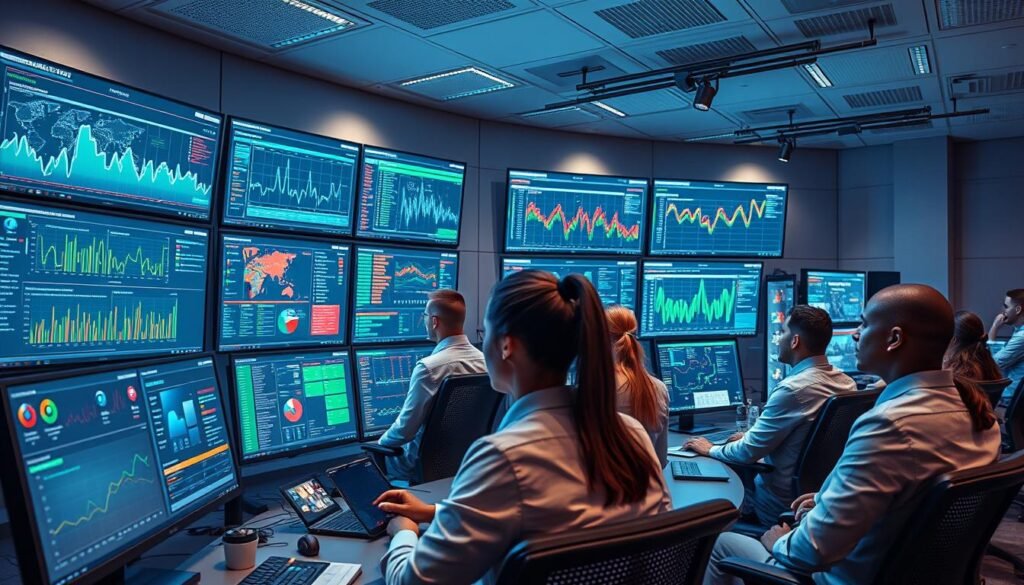Latest Technology Trends. In today’s fast-paced business environment, understanding emerging technologies is crucial for future planning. The technology landscape of 2025 is marked by economic and geopolitical uncertainty, major shifts in consumer behavior, and an expanding digital ecosystem.
As we navigate this complex environment, businesses must adopt and integrate AI into their core operations to stay ahead. We will explore the most significant trends poised to reshape industries and business operations in 2025, providing a comprehensive roadmap for organizations preparing for digital transformation.
Key Takeaways
- Emerging technologies will drive business innovation in 2025.
- Economic factors and geopolitical tensions will influence tech adoption.
- Shifting consumer behaviors will drive innovation in personalized experiences.
- Business leaders must differentiate between fleeting hype and lasting innovation.
- Sustainability will become a key driver of technology adoption.
The Technology Landscape of 2025
As we approach 2025, the technology landscape is undergoing significant transformations driven by various economic and geopolitical factors. The digital ecosystem is expanding, connecting consumers, businesses, and technologies in complex networks.
Economic and Geopolitical Factors Shaping Tech Evolution
Economic and geopolitical factors are significantly influencing the tech evolution. Trade policies, regulatory changes, and global economic shifts are impacting how businesses develop and implement technology. Platforms are being reshaped by these factors, affecting how companies operate and innovate.
Digital Ecosystem Expansion and Consumer Behavior Shifts
The digital ecosystem is rapidly expanding, driven by changing consumer behaviors and expectations. There’s a growing demand for personalized experiences, instant service, and seamless integration across platforms.
Businesses are responding by developing sophisticated customer journey mapping and experience design methodologies that leverage advanced analytics and AI, ultimately enhancing the user experience with innovative tools.
Latest Technology Trends to Watch in 2025
In 2025, we’re expecting a major shift in the technology landscape, driven by advancements in AI, infrastructure, and data management. As organizations continue to invest heavily in AI models and AI-powered solutions, the gap between AI ambitions and infrastructure readiness remains a significant challenge.

Agentic AI: From Copilots to Autonomous Reasoning Agents
The evolution of AI towards more autonomous systems, known as Agentic AI, is transforming how business operates. These advanced AI systems are moving beyond simple assistance, developing into autonomous reasoning agents capable of complex decision-making.
AI-Powered Humanoids in the Workplace
AI-powered humanoids are set to revolutionize the workplace by enhancing productivity and efficiency. These humanoids, integrated with advanced AI, will work alongside human teams, improving collaboration and output.
Reality Checks: Infrastructure and Data Readiness Challenges
Despite the progress in AI, many organizations face significant challenges related to infrastructure and data readiness. Ensuring that the necessary computing power, such as GPU capabilities, and proper data management practices are in place is crucial for successful AI implementation.
To overcome these challenges, business leaders must adopt a pragmatic approach, prioritizing use cases and gradually modernizing their infrastructure. This step-by-step strategy will help organizations leverage AI technologies effectively, ultimately driving long-term gains.
AI Transforming Cybersecurity Landscape
As we approach 2025, the cybersecurity landscape is undergoing a significant transformation driven by advancements in AI. The increasing sophistication of AI technologies is introducing new challenges and opportunities in the realm of cybersecurity.
The emergence of new AI-driven threats is a pressing concern. Cyber attackers are leveraging AI to orchestrate more complex and targeted attacks. In response, organizations are developing AI-powered defense mechanisms to detect and mitigate these threats more effectively.
New AI-Driven Threats and Defense Mechanisms
The integration of AI in cybersecurity is a double-edged sword. On one hand, AI-driven threats are becoming more prevalent, using machine learning to identify vulnerabilities and exploit them. On the other hand, AI-powered defense systems can analyze vast amounts of data to identify patterns and anomalies, enhancing security protocols.
- AI-driven attacks are becoming more sophisticated, necessitating advanced defense strategies.
- Organizations are investing in AI-powered security solutions to stay ahead of these threats.
Quantum Computing’s Impact on Security Protocols
Advancements in quantum computing will significantly impact security protocols. As quantum computing inches toward mainstream adoption, organizations must adopt quantum-resistant security protocols to safeguard sensitive data.
| Security Aspect | Current State | Future State with Quantum Computing |
|---|---|---|
| Encryption Methods | Traditional encryption algorithms | Quantum-resistant encryption methods |
| Data Security | Vulnerable to quantum-powered attacks | Protected by quantum-resistant protocols |
| Organizational Readiness | Limited awareness and preparation | Increased adoption of quantum-safe security |
As organizations prepare for the future, they must consider the implications of quantum computing on their security infrastructure. This includes transitioning to quantum-safe security protocols and ensuring that their data remains secure in a post-quantum world.

Sustainable Technology in an AI-Powered Era
As we move into 2025, the intersection of AI and sustainability is becoming increasingly crucial for businesses worldwide. The need to balance technological advancement with environmental responsibility is driving innovation in sustainable technologies.
Balancing AI Advancement with Environmental Impact
The rapid growth of AI has raised concerns about its environmental impact, particularly in terms of energy consumption. To mitigate this, companies are developing more energy-efficient AI systems.
We’re seeing a shift towards AI solutions that not only reduce environmental footprint but also optimize power usage across various industries.
Energy-Efficient Solutions and “Energy Networking”
A key development in this area is the emergence of “energy networking,” which combines software-defined network capabilities with electric power systems made up of direct current (DC) micro grids. This approach delivers greater visibility into emissions and provides a platform for optimizing energy usage, distribution, and storage.
| Technology | Description | Impact on Sustainability |
|---|---|---|
| AI-Powered Energy Optimization | Leverages AI to manage energy distribution and consumption | Reduces energy waste and promotes efficient use |
| Energy Networking | Combines software-defined networking with DC micro grids | Enhances visibility into emissions and optimizes energy usage |
| Energy-Efficient Hardware | Specialized AI chips and cooling systems designed to reduce environmental impact | Lowers the environmental footprint of computational workloads |
By adopting these innovative systems, businesses can significantly improve their sustainability initiatives. As we continue to push the boundaries of AI, it’s clear that sustainability will remain a core focus, driving the development of more environmentally friendly technologies.
Industry-Specific Technology Innovations
The rapid evolution of technology is revolutionizing numerous sectors, from education to logistics. As we explore the latest advancements, it becomes clear that different industries are leveraging technology in unique and innovative ways.
EdTech Revolution: Personalized Learning and Immersive Experiences
The education sector is undergoing a significant transformation with the integration of advanced technologies. Personalized learning platforms, powered by AI, are enabling tailored educational experiences that cater to individual students’ needs.

Supply Chain Transformation: AI-Assisted Logistics and Sustainability
AI is playing a crucial role in transforming supply chain management by enhancing logistics and promoting sustainability. Advanced algorithms are being used to optimize routes, predict demand, and reduce waste.

Network Intelligence: Approaching Zero Downtime
Network management is another area where AI is making a significant impact. Intelligent, automated tools are being used to execute error-free workflows throughout the network lifecycle, reducing downtime caused by misconfigurations to near zero.
Over 40% of network outages are directly caused by misconfigurations, costing businesses an average of 9% of their total annual revenue. AI-driven intelligence is revolutionizing network management by:
- Reducing downtime caused by misconfigurations to near zero.
- Executing automated workflows throughout the network lifecycle.
- Providing complete traceability for every action.
- Continuously improving reliability and performance.
- Making automation accessible to more organizations.

Preparing Your Business for the Tech-Driven Future
As technology continues to advance at a rapid pace, businesses must be proactive in embracing the changes that will drive success in the future. To compete effectively, business leaders must differentiate between fleeting hype and the technologies that will drive lasting change.
This report aims to provide business decision-makers with the insights needed to understand and assess the inflection points of technology and their future impact.
To prepare for the tech-driven future, companies must do more than just be aware of trends; they need strategic planning and organizational readiness. This involves assessing current technological capabilities, identifying gaps, and creating a culture of continuous learning and adaptation.
By doing so, businesses can remain agile in the face of accelerating technological change and develop technology roadmaps that align with their business objectives.
For more insights and practical guidance, we invite you to download our full report, which provides a comprehensive analysis of the latest technology trends and their potential impact on your business today and in the year to come.
